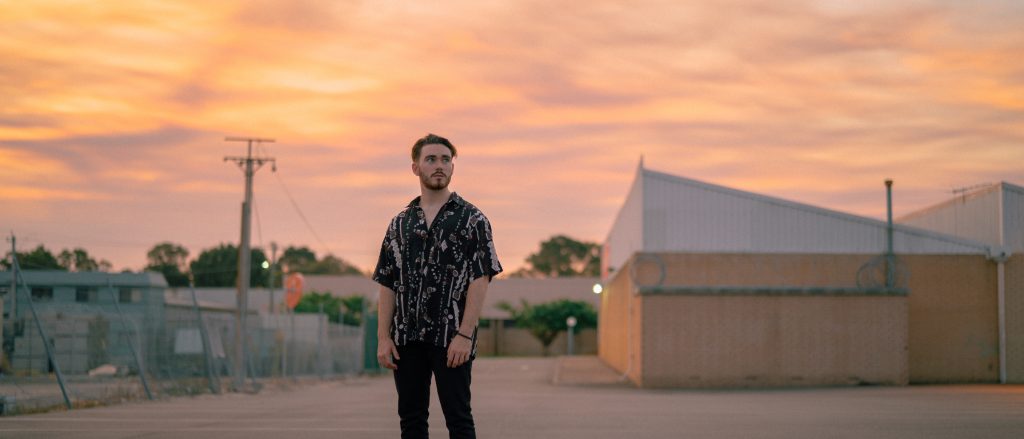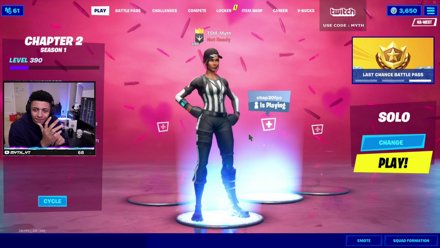Why Aussie record labels are eyeing TikTok and Twitch to break acts

You’ll find Tones & I’s ‘Dance Monkey’ and Tkay Maidza’s ‘Glide’ on the ByteDance-owned video-sharing app TikTok.
But the best current ANZ example of the Chinese platform’s influence is Auckland-based Benee.
Her ‘Glitter’ went viral after being made into a dance and expanded international success.
The dance to ‘Glitter’ was popularised by Australian influencer Sarah Magusara who has nine million followers on TikTok.
Within weeks, 181,000 TikTok videos were using it, while it generated 11,5 million streams on Spotify and entered the Australian charts.
19-year old Benee herself was not a TikTok user and only found out when fans started forwarding the videos to her.
“I don’t really know that much about that, but it’s pretty insane!” she responded.
She added, “I’m not a user yet, but it’s entertaining scrolling through. I could see how people could get hooked on that.”
When Benee played the Laneway festival this month, during the ‘Glitter’ chorus, hundreds of fans would break into the dance and film themselves on their phones.
Benee won’t make any money out of it but its ripple effect has seen the Australian music industry take a closer look at its importance.
At least half a dozen record labels and publicists confirmed to TMN they are working on launching TikTok campaigns later this year.
“It’s still early days but it’s something we’re definitely doing,” an A&R executive confided.
It’s agreed that TikTok’s recent multi-territory licensing deal with indies global digital rights agency Merlin was a reassuring step.
Like many musicians, Nic Rollo of Perth band Cloning was initially put off TikTok because of the stigma of the age of its users and the content on the platform.
“But once I got in the trenches of it I’ve definitely become quite a fan,” he relates.
“The biggest thing that excites me, and should excite a lot of people, is the ability for viral growth and reach.
“There’s no other platform where a video can reach 200,000 people overnight without having to pay a ridiculous amount of money.”
A further appeal of the app, Rollo continues, is “it’s a really engaged audience so it’s fun interacting with a crowd that is typically younger than I have usual contact with – it’s cool hearing what kind of music they like.
“I’ve had a great response so far from people who follow me and watch my videos.
“Especially from the people that had been interacting with me from before I released my most recent song ‘Monster’.
“I think they feel a sense of community by being on a musical journey with me, which is cool.”
Rollo concludes: “I probably should start exploring and looking for similar artists who I can collaborate with.”

Nic Rollo to find collaborators on TikTok
Following The Path Of Brands
The music industry is following the path of brands who are using TikTok to reach the young audience – especially the 16—24 age group which makes up 40% of the users.
A recent piece in B&T saw Alex Reid of youth events and talent agency Amplify said the number of brands integrating TikTok in their marketing mix has grown considerably in the last 6 months, “the eyeballs on the platform are hard to ignore”.
“Brands wanting to connect with Gen Z in 2020 have to be more flexible in how they insert themselves into the conversation and adopt these new platforms and talent early.”
More than 1.5 million Australians use the app monthly, opening it eight times a day.
That’s nearly three times more than Instagram and four times more than Snapchat.
Figures last week from Sensor Tower revealed that TikTok was downloaded over 104.7 million times worldwide in January 2020.
That was a 46% increase from January 2019.
The biggest gains were in India, (34.4% of total downloads) and Brazil (10.4%).
It was earlier revealed TikTok was the world’s second-most downloaded app in 2019 after WhatsApp, and generates US $40 million a month.
66% of its users are under the age of 30, and the average time spent is 52 minutes per day.
Flick The Twitch Switch
Amazon-owned live streaming site Twitch is growing to be a crucial platform for new and emerging acts as it expands beyond its core video game audience.
It’s increasingly seen in the Australian indie sector as a fun video streaming service, and TikTok executives are holding talks overseas with major and indie labels.
It’s not merely that musicians find that going live and talking directly to fans develops a loyal audience.
Gamers are more willing than music fans to pay extra for experiences – whether subscribing to their channels or tipping for song requests. – especially when they know the revenue is going straight to the musician they like.
It creates a fan-artist intimacy that social media only promised without delivering, and obviously extends a music career on streams and live.
Following on from Marshmello’s 10-minute set in the game Fortnite which was watched by 10 million Twitchers, Brendon Urie of Panic! At The Disco, Matt Heafy of Trivium, T-Pain and Deadmau5 streamed live shows, reaching up to 500,000 fans for some.
The rule is you have to do it frequently and devote at least two hours a session.
Urie also does Q&As, Heafy live stream views from the stage or in the recording studio, while Deadmau5 plays games and streams himself programming his stage props.
Twitch head of music operations Will Farrell-Green told Music Week, “These artists are regular streamers and great examples of where music meets gaming on Twitch.
“They all stream different formats, which is great from a content diversification point of view.
“As we build our music presence in the future, we’ll look to these types of artists as SMEs [small-to-medium enterprises] and advocates of what’s possible within our community.”

Stating in 2011, Twitch’s appeal to the Australian music industry are many-fold.
71% of Twitch’s users are millennials, with the average age set at 21, 81.5% of Twitch users are male and 35% of Twitch views are on mobile devices.
It broadcasts an average of 11 million videos each month, with 62.87% of Twitch activity in English, with 21.32% of visitors coming from the US.
But given Australia’s multiculturalism other popular languages on the site include German (7.79%), Russian (6.83%), French (5.35%), Spanish (4.46%) and Portuguese (3.36%).
Two examples of the growing relationship with the music industry saw Astralwerks tap top Twitch streamer Ninja (with a following of 10.6 million, and now on Microsoft’s live gaming platform Mixer) to put together an EDM compilation which hit 20 million Spotify streams.
E-sports team and gamer management firm Dignitas signed RZA as an artist, adding content streamers to their gaming talent roster.
Karen Allen, author of Twitch For Musicians said, “Twitch can make you money and add to your discovery,” but added that some may find it difficult to set up, and for privacy reasons, musicians can only communicate with subscribers, which have to be extended every month.
However, Allen outlined ways to get over the tests – including “Go to the music category and dedicate an hour a day for a week and watch the streamers to see the possibilities.”






























